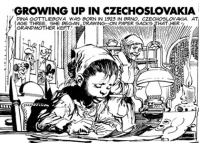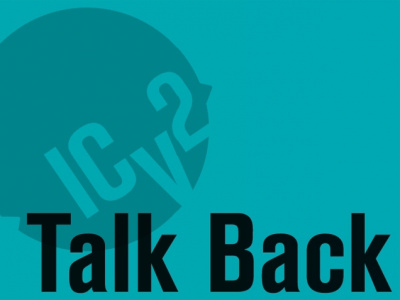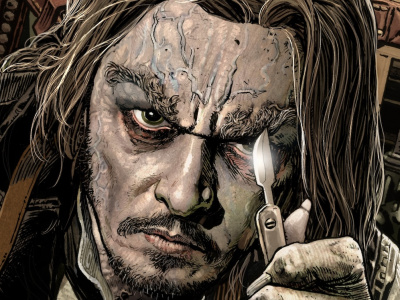
Confessions of a Comic Book Guy is a weekly column by retailer Steve Bennett of Super-Fly Comics and Games in
In the past I've suggested that as busy as we retailers are it's a good idea to read several newspapers online every day because you never know what you'll need to know. For instance if I hadn't read the New York Times I wouldn't have known about the collaboration between Neal Adams and Joe Kubert featuring an introduction by Stan Lee.
Working from text by Rafael Medoff, director of the David S. Wyman Institute for Holocaust Studies, Adams and Kubert tell in comic book form the incredible story of Dina Gottiebova Babbitt, who survived
Some of those paintings survived the war and are in the possession of the Auschwitz-Birkenau Memorial and Museum and
According to the story Medoff and Adams "have offered the story to DC Comics and Marvel in hopes of getting it published but no deal is yet in place." It's certainly a worthy project and while not something that would ordinarily be in the wheelhouse of either publisher I could see them being interesting in such a prestigious project, if only for the mainstream media attention it would garner them.
But the project has a couple of drawbacks. It's in black and white with splashes of color. And is only six pages long.
You'd think
I've exchanged e-mails with Milton Griepp on this subject and, quite rightly, he suggests a much better fit for the material would be the New York Times Magazine or The New Yorker… and that it's already been published, online. If you go to the NYT website (you'll have to subscribe to receive 'free exclusive online access' but then it is, well, free) and use the search engine to find the article I'm writing about you'll also find a PDF of the story so can read it yourself. As well you should.
You should also regularly frequent the World Famous Comics News Room which manages to collate every posted news story and article about comic books and strips in the English language. So coincidentally (like there is such a thing) a couple days after writing about Indian comics in my last column I came across an article about the Indian comic book industry. The gist of it being that after a long slump sales circulation is up and new characters were being introduced.
But there were a couple quotes that got my attention: (1)"the renewed interest in comics is partially the result of aggressive publicity;" and (2)"feedback is being solicited" on the new comics. So basically the Indian comic book industry is doing what I wish the American one would do. I know I've ridden this hobby horse before but you can publish as many Johnny DC and Marvel Adventure titles as you like but until you can put them in front of kids it doesn't really matter. This is where an inexpensive outreach program sending interns to summer camps and state and county fairs to pass out free samples could pay big dividends.
Those would also be good places to actually ask the kids what they want to read. When the first issue of Billy Batson and the Magic of Shazam came out it got mostly positive reviews, but it also got a couple of extremely negative ones. The reviewers didn't just dislike the comic, they declared that no child would like it either, that it was an adult’s idea of what a kid's comic should be. Of course they're entitled to that opinion but unless they've passed it around a first grade classroom they don't know; they suspect, they believe, but don't know.
It's this presumption of certainty with no basis in fact that hurts the direct sales market; without doing anything like market research* editors and publishers arrogantly assume, perhaps through magic, they know best, certainly better than either retailers or the fans, about what will sell and what won't (which is I suppose why they thought everyone was breathlessly waiting for a new version of The Atom).
So I guess what I'm asking is, given the amount of money DC must have spent and the resources at their disposal did anyone at DC ever think to show copies of Tiny Titans, Billy Batson, and Supergirl: Cosmic Adventures in the Eighth Grade to actual kids?
* The comic books industry really is a unique institution. Try to imagine a bakery where the bakers decide what kind of bread they'll bake and if people don't like it because it's burnt or didn't come out in time for the morning rush the response is invariably, "you crybabies can go screw; we'll be in the back making more bread."
The opinions expressed in this Talk Back column are solely those of
the writer, and do not necessarily reflect the views of the editorial
staff of ICv2.com.







